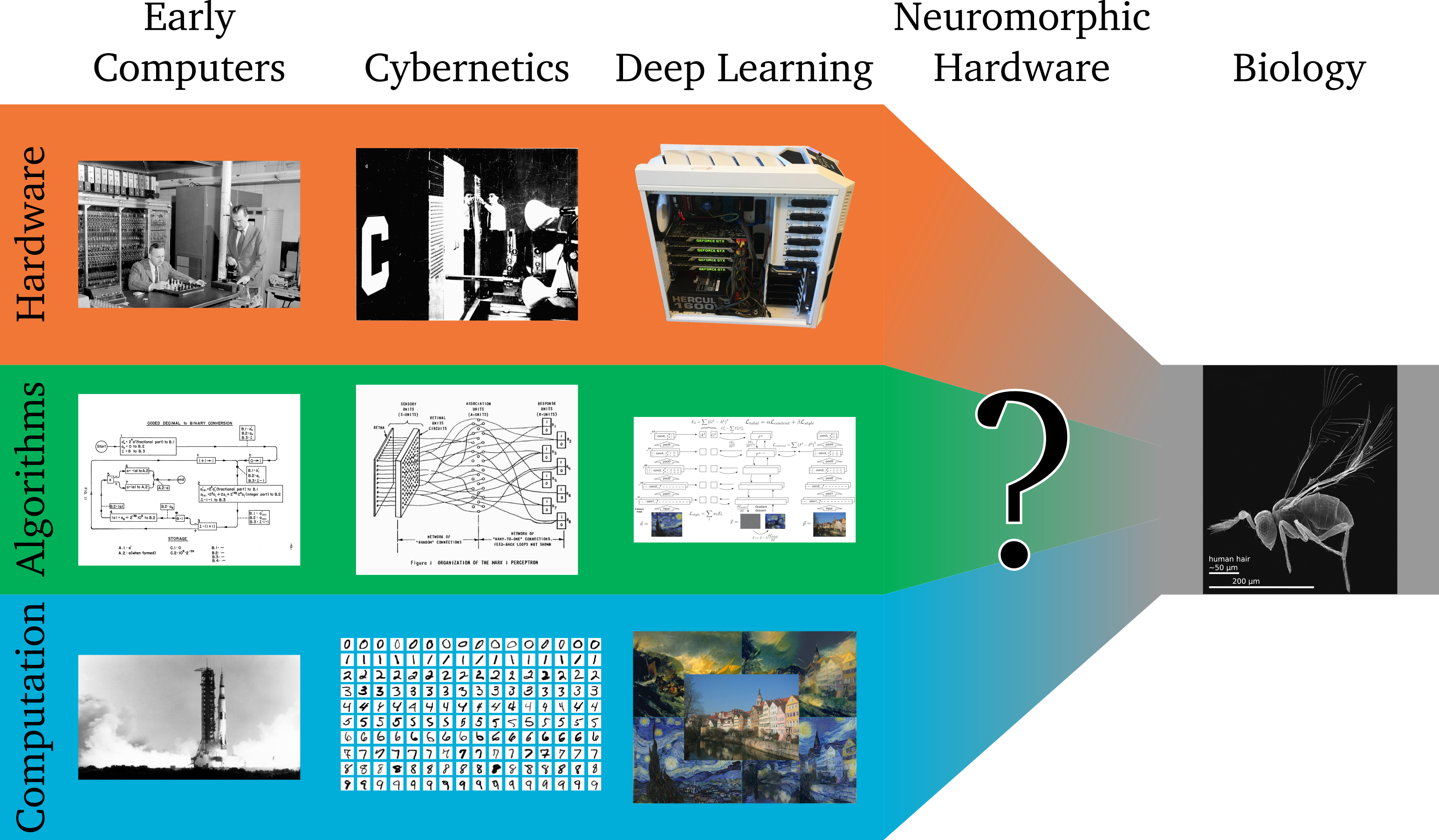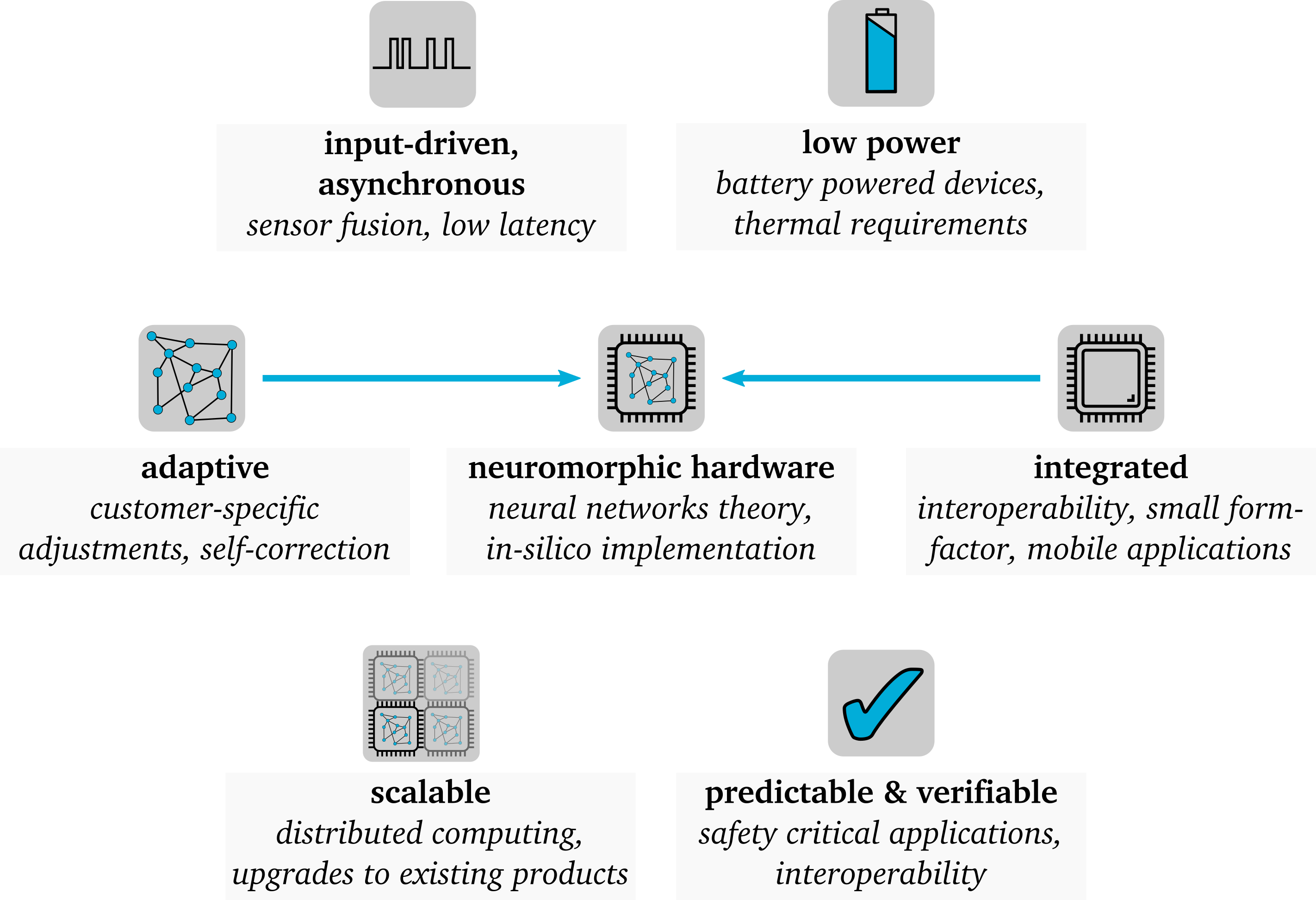A brief history of Neuromorphic Hardware.
While the first computers were built to compute complex but well defined functions in physics - such as rocket trajectories - the cybernetics era introduced the concept of learning a function from data. Inspired by brain function, neural networks have had great success and can now solve complicated problems functions on, for example, images.
The true value of computation in neural networks however is demonstrated in biology. Even the smallest insect, the fairy wasp Dicopomorpha echmepterygis, can look at the world with eyes, and understand everything necessary to control its muscles and lay its parasiodic eggs in appropriate hosts. Complex, goal-directed behavior at 200 micrometers.
The path towards technical systems with similar capabilities is the path towards neuromorphic hardware: Instead of only simulating neural networks on standard modern hardware, we are developing hardware that works like neural networks.

